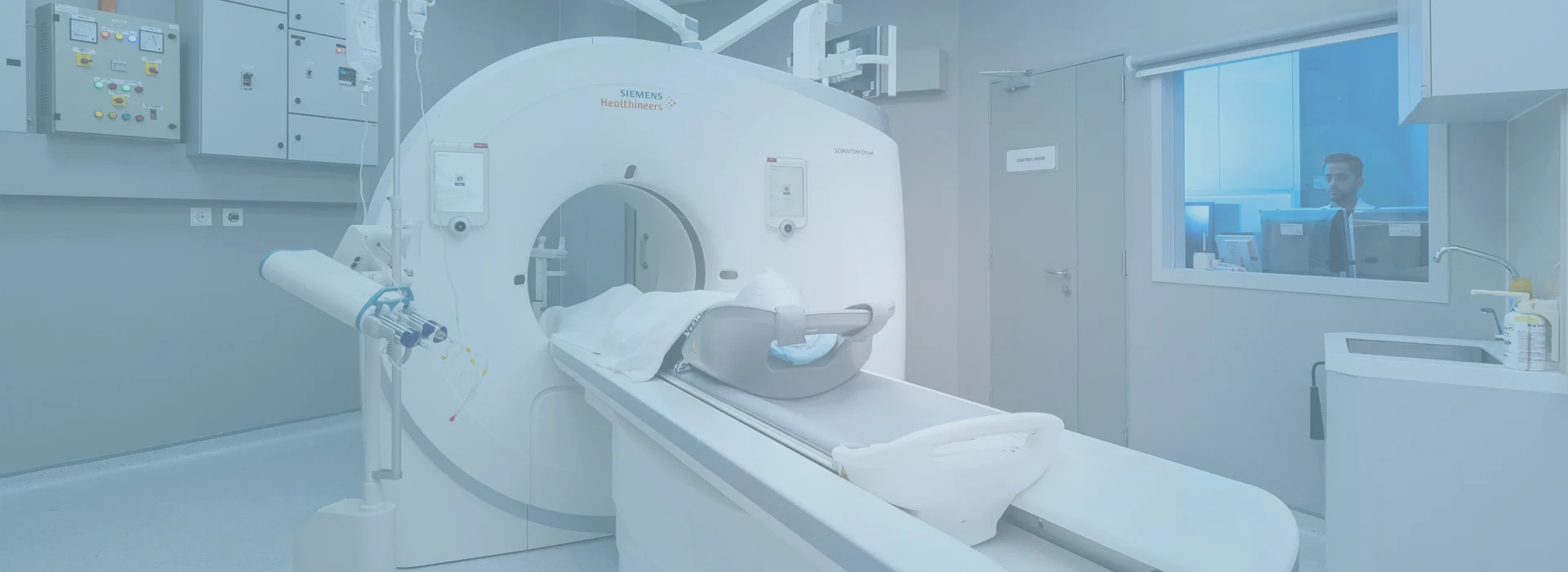
03 Apr Bone Cancer Treatment: Everything You Need To Know
Bone Cancer Treatment: Everything You Need To Know
By Island Hospital | Apr 3, 2024 12:00:00 PM
Bone cancer is a severe condition characterized by the uncontrolled growth of cells within the bones.
Bone cancer can be classified into primary and secondary (metastatic) types. Primary bone cancers originate within the bones, while secondary bone cancers have spread to other body parts.
Bone cancers are relatively rare, making up less than 1% of all cancers, with a higher incidence in children, teenagers, and young adults.
Although the ways to prevent bone cancer remain elusive, awareness on the symptoms and risk factors will help early detection and improve outcomes.
In this article, we’ll discuss the types, stages, symptoms, and treatment of bone cancer.
Types of Bone Cancer
Bone cancer represents a complex group of conditions characterized by abnormal growths within the bone. Despite being rare, it significantly impacts patients’ lives, necessitating a comprehensive understanding of its types.
The primary bone cancers—osteosarcoma, Ewing’s sarcoma, chondrosarcoma, and chordoma—have distinct characteristics and demographics.
1. Osteosarcoma
Osteosarcoma is the most prevalent type of bone cancer, predominantly affecting children and young adults. It typically arises in the cells where new bone tissue forms, often at the ends of long bones like the arms and legs.
Osteosarcoma is characterized by rapid growth and has a notable propensity to occur near the knee and shoulder regions. It can potentially metastasize to other body parts, including the lungs.
Early detection and aggressive treatment, involving surgery and chemotherapy, are crucial for improving survival rates.
2. Ewing’s Sarcoma
Ewing’s Sarcoma cluster represents a group of cancers believed to originate from the same type of primitive cell. This cancer primarily affects children and young adults, with a common occurrence in the pelvis, ribs, and long bones.
Ewing’s sarcoma is known to be aggressive and tends to spread rapidly. Treatment typically involves a combination of surgery, chemotherapy, and radiotherapy.
The disease’s prognosis depends significantly on the cancer’s stage at diagnosis and the success of the treatment regimen.
3. Chondrosarcoma
Chondrosarcoma emerges from cartilage cells, the flexible connective tissue found in many body areas.
Unlike osteosarcoma and Ewing’s sarcoma, chondrosarcoma primarily affects adults, with a higher prevalence observed in middle-aged and older individuals. It usually develops in the pelvis, thighs, and shoulders.
Chondrosarcoma is distinguished by its slower growth rate compared to other bone cancers, but its treatment poses challenges due to its resistance to chemotherapy and radiation therapy.
Surgical removal of the tumor is the mainstay of treatment, emphasizing the importance of an accurate diagnosis and surgical expertise.
4. Chordoma
Chordoma is a rare form of bone cancer that typically starts in the spine’s bones, either at the base of the skull or the lower back. Chordoma predominantly affects adults and is more common in men than women.
This cancer grows slowly but is challenging to treat because of its proximity to critical structures such as the spinal cord.
Surgery and radiation therapy are the primary forms of treatment to remove as much of the tumor as possible while minimizing tissue damage.
Bone Cancer Stages
The staging process involves assessing the size of the tumor, its location, and whether the cancer has spread beyond the bone to other parts of the body.
There are four main stages of bone cancer, each reflecting the progression and severity of the condition.
Stage 1 (Low-grade)
During the initial stage, the cancer is considered low-grade, indicating that the cells are not very aggressive and are less likely to spread quickly.
Stage 1 is subdivided into Stage 1A and Stage 1B.
In Stage 1A, the tumor is confined within the bone and has not spread to nearby tissues or other body parts. The tumor is 8 centimeters or smaller.
Stage 1B tumors may be larger than 8 centimeters and may involve more than one part of the bone but have not spread beyond the bone.
The prognosis at this stage is generally favorable, with treatment often involving surgical removal of the tumor, possibly followed by chemotherapy or radiation therapy to address any microscopic cells that may remain.
Stage 2 (High-grade)
This stage is characterized by more aggressive cancer cells with a higher potential to grow and spread.
Like Stage 1, Stage 2 is divided into Stage 2A and Stage 2B based on the tumor’s size and spread.
In Stage 2A, the tumor remains confined to the bone but is high-grade, indicating a greater likelihood of spreading.
In Stage 2B, the tumor may have grown through the bone into nearby structures, such as muscles or fat, but has not reached distant organs.
Treatment typically involves more aggressive approaches, including surgery, high-dose chemotherapy, and possibly radiation therapy.
Stage 3
At this stage, the cancer is high-grade and has spread to other areas within the same bone or to nearby bones.
Stage 3 represents a more advanced form of bone cancer, where the tumor has demonstrated the ability to grow beyond its original location, increasing the complexity of treatment.
Management strategies often include multimodal approaches combining surgery, chemotherapy, and radiation therapy to control the spread and remove the tumor.
Stage 4
The final stage signifies that the cancer has metastasized or spread from the bone to other body parts, such as the lungs, liver, or other distant organs.
Stage 4 is a critical condition that requires extensive treatment, including systemic chemotherapy, to target cancer cells throughout the body.
Doctors may decide on targeted therapies based on the cancer’s specific genetic makeup. Surgery or radiation therapy may be used to address primary and metastatic tumors.
The prognosis in Stage 4 is more guarded, with treatment focusing on controlling the disease’s spread and managing symptoms.
Common Symptoms of Bone Cancer
Bone cancer symptoms are diverse and can vary significantly depending on the tumor’s location, size, and type.
Initially, patients may experience only mild symptoms, which could be mistaken for other, more common conditions. However, as the disease progresses, symptoms become more pronounced and debilitating.
One of the hallmark symptoms of bone cancer is pain in the affected bone.
This pain may be intermittent and worsen at night or during physical activity. Over time, it can become constant and refuse to subside with rest.
Swelling and tenderness near the affected area are also common, and the skin over the tumor may feel warm and appear red.
Another significant symptom is the weakening of the bone, leading to an increased risk of fractures with minimal or no trauma.
Additionally, patients may experience fatigue, unintended weight loss, and fever, symptoms that are not exclusive to bone cancer but may occur as the body’s response to the disease.
In some cases, bone cancer can impair mobility, making it difficult for individuals to move the affected limb or joint normally.
This limitation can significantly impact the quality of life, emphasizing the importance of early detection and treatment to manage symptoms and improve outcomes.
Bone Cancer Diagnosis
Diagnosing bone cancer involves a series of steps, each aimed at determining the presence of cancer, its type, and extent.
Given the rarity of bone cancer and the commonality of its symptoms with other less severe conditions, a thorough and systematic approach is essential for accurate diagnosis.
The diagnostic journey typically begins with a detailed medical history and physical examination.
Physicians assess symptoms, such as bone pain, swelling, and the presence of a palpable mass, alongside any history of previous cancers or familial cancer syndromes that might increase the risk of bone cancer.
However, more detailed imaging techniques are often necessary to understand the tumor’s size, location, and whether it has spread.
Here are tests and procedures used to diagnose bone cancer:
| Method | Details |
|---|---|
| Imaging tests | • Play a crucial role in the initial detection and assessment of bone cancer. |
| X-rays | • Can reveal abnormalities in bone structure, including a tumor. • However, more detailed imaging techniques are often necessary to understand the tumor's size, location, and whether it has spread. |
| Magnetic resonance imaging (MRI) | • Offers a detailed view of the bone and the soft tissues surrounding it, making it invaluable for surgical planning. |
| Computed tomography (CT) scans | • Provide cross-sectional images of the body, helping to identify the tumor's extent and whether cancer has spread to the lungs, which is a common site of metastasis for bone cancer. |
| Bone scans | • Help detect if cancer has spread to other bones by highlighting areas of rapid bone growth or repair indicative of cancer. |
| Biopsy | • The removal and examination of tissue from the suspected area, is the definitive method for diagnosing bone cancer. • There are two main types of biopsies used in the diagnosis of bone cancer 1. Needle biopsy: a needle is used to remove a small sample of the tumor 2. Surgical biopsy: a surgeon removes part or all the tumors. • The choice between these methods depends on the tumor's location and other factors. • The biopsy sample is then examined under a microscope by a pathologist to determine if cancer cells are present and, if so, the type of bone cancer. |
Further tests may be conducted to determine the stage of cancer, crucial for developing an effective treatment plan. Staging tests might include additional scans, such as PET scans, to assess cancer’s spread within the body.
How Is Bone Cancer Treated?
The treatment of bone cancer is multifaceted and tailored to each patient’s specific type of cancer, its stage, location, and overall health.
A multidisciplinary team, including orthopedic oncologists, radiologists, pathologists, and medical oncologists, collaborates to develop and implement a comprehensive treatment plan.
The primary treatment modalities for bone cancer include surgery, chemotherapy, and radiation therapy, often used in combination to maximize effectiveness.
1. Surgery
Surgery is a cornerstone treatment for bone cancer, aiming to remove the entire tumor while preserving as much normal function as possible.
Advances in surgical techniques have significantly improved outcomes, allowing many patients to avoid amputation.
Limb-sparing surgery, where only the tumor and a margin of surrounding tissue are removed, is now possible in most cases. Reconstruction with prosthetics or bone grafts from other parts of the patient’s body or donors can help restore function.
In cases where limb-sparing surgery is not feasible due to the tumor’s size or location, amputation may be necessary to ensure all cancer cells are removed.
2. Chemotherapy
Chemotherapy involves the use of powerful drugs to kill cancer cells and is particularly effective against certain types of bone cancer, such as osteosarcoma and Ewing sarcoma.
Chemotherapy can be administered before surgery (neoadjuvant therapy) to shrink the tumor and make it easier to remove after surgery (adjuvant therapy) to kill any remaining cancer cells.
The specific drugs and regimen depend on the type of bone cancer and its characteristics.
3. Radiation therapy
Radiation therapy uses high-energy rays to destroy cancer cells and is together with other treatments. It is particularly beneficial for patients with Ewing sarcoma and those who cannot undergo surgery.
Radiation therapy can also help relieve symptoms in cases of advanced bone cancer or when cancer has spread to other parts of the body.
Innovations in radiation technology have made it possible to target tumors more precisely, minimizing damage to surrounding healthy tissue.
4. Other Treatments
In addition to these primary treatments, targeted therapy and immunotherapy are emerging as promising options for certain bone cancers.
These treatments focus on specific molecular targets in cancer cells or harness the patient’s immune system to fight cancer, offering a more personalized approach to treatment.
Bone cancer treatment can also involve supportive care to manage symptoms and side effects, including pain management, physical therapy, and nutritional support. The goal is to treat the cancer and improve the patient’s quality of life during and after treatment.
Begin Your Journey to Recovery at Island Hospital
Living with bone cancer can be challenging as pain is the most common symptom to deal with.
While some tumors can be painless, most people will feel mild to severe pain. Many describe the pain as throbbing and stabbing. Some report a lump in the area, which is soft or hard.
The important thing is to get a diagnosis from a professional healthcare provider at the first sign of trouble and initiate treatment immediately.
Island Hospital has a dedicated team of cancer experts ready to guide you through every step of your healing journey.
With cutting-edge diagnostic tools, personalized treatment plans, and a compassionate approach to care, our specialists in the Clinical Oncology and Haemato-Oncology Center are uniquely equipped to tackle even the most complex cases.
Don’t let bone cancer dictate your life a day longer – take control by scheduling an appointment with us today.
If any doubts or concerns arise, feel free to contact us and make an inquiry; our team is here to address your questions and guide you through this journey.
FAQs
What are the common symptoms of bone cancer?
While the specific symptoms of bone cancer can vary depending on its type and extent, common indicators may include:
- Persistent bone pain
- Noticeable swelling in the affected area
- An increased risk of fractures
- Restricted mobility or difficulty moving the affected limb
- Unintended weight loss
- Persistent fatigue
- Occasional low-grade fever
What is the survival rate of bone cancer?
Based on the information updated on June 14, 2022, around 66.8% of people diagnosed with bone cancer can expect to live for at least five years from the time of diagnosis.
However, your survival rate depends on your body’s medication response and may vary from these estimates. To determine your survival rate more accurately, ask your doctor.
Does bone cancer spread fast?
The spread rate of bone cancer hinges on its type and extent.
Ewing’s Sarcoma tends to progress rapidly, while osteosarcoma’s growth speed correlates with its grade. Conversely, chondrosarcoma generally grows slowly.
What causes bone cancer?
Most bone cancers result from mutations that occur during a person’s lifetime.
While research is still underway to learn more about the exact reason behind these mutations and other reasons that cause bone cancers, identifying potential risk factors can aid in early detection and prevention efforts.
Where does bone cancer usually start?
Bone cancer can begin in any bone in the body, but it usually affects the pelvis or the long bones in the arms and legs.
How to treat bone cancer?
Surgery, chemotherapy, and radiotherapy are some of the ways to treat bone cancer. However, the specific treatment option depends on several factors, including the type, size, location, and stage of the cancer.











![[IH 2025] #33 ECG Test_Image 1 medical-machine-ecg-test](https://islandhospital.com/wp-content/uploads/2025/07/IH-2025-33-ECG-Test_Image-1-600x400.png)

